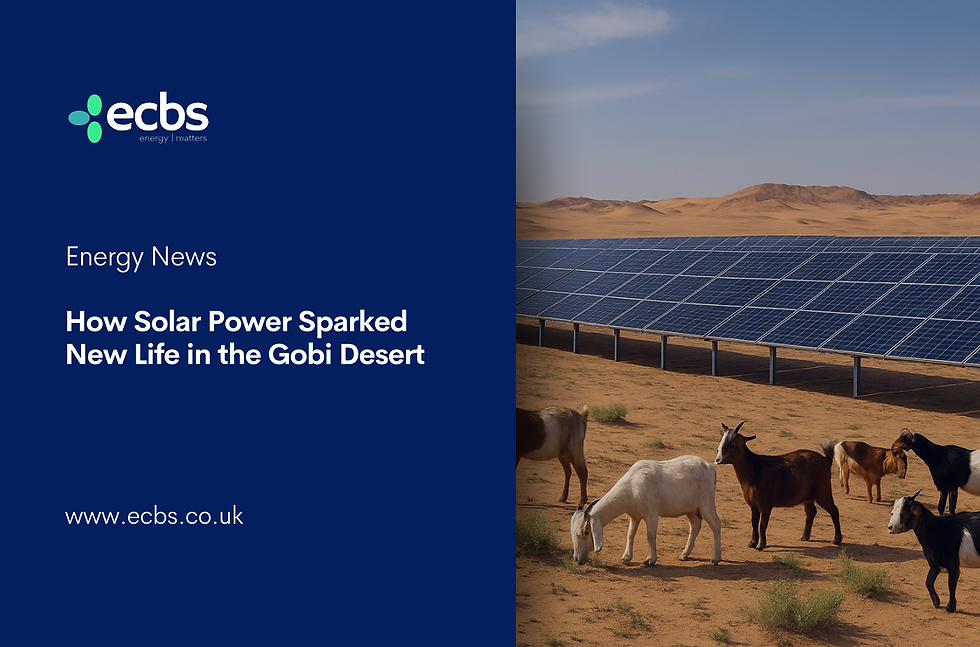The Impact of Energy-Efficient Lighting: Businesses and the Environment
- juliettedraper
- Apr 3, 2024
- 4 min read

Lighting plays a pivotal role in shaping the atmosphere and functionality of commercial spaces, while also exerting a significant influence on energy consumption and environmental sustainability. As technology advances, the adoption of energy-efficient lighting solutions emerges as a transformative strategy for businesses seeking to optimise operational efficiency, reduce costs, and minimise environmental impact. In this detailed exploration, we delve into the multifaceted impact of energy-efficient lighting, dissecting its myriad benefits for businesses and the environment.
Understanding Energy-Efficient Lighting: Energy-efficient lighting encompasses a diverse array of lighting technologies designed to deliver optimal illumination while minimising energy consumption and environmental impact. Prominent examples include Light Emitting Diodes (LEDs), compact fluorescent lamps (CFLs), and advanced lighting controls. Unlike traditional incandescent bulbs, energy-efficient lighting options utilise innovative mechanisms to produce light more efficiently, resulting in reduced energy usage, longer operational lifespans, and enhanced performance.
How Energy-Efficient Lights Work in Comparison to Normal Lights:
Energy-efficient lighting solutions operate on fundamentally different principles compared to traditional incandescent bulbs, resulting in significant differences in energy consumption, longevity, and performance.
Traditional Incandescent Bulbs:
Incandescent bulbs produce light by passing an electric current through a thin filament, causing it to heat up and emit light. However, this process is highly inefficient, as a significant portion of the energy is converted into heat rather than visible light.
As a result, traditional incandescent bulbs are notorious for their low energy efficiency, with a large percentage of the input energy wasted as heat. These bulbs have relatively short lifespans and consume higher amounts of electricity, contributing to higher energy bills and environmental impact.
Energy-Efficient Lighting Solutions:
LED lights, CFLs, and other energy-efficient lighting technologies operate on vastly different principles compared to incandescent bulbs. LEDs, for example, generate light through the process of electroluminescence, wherein electrons recombine with electron holes within the semiconductor material, emitting photons in the process.
This process is significantly more energy-efficient than the incandescent filament heating mechanism, resulting in greater light output per unit of energy consumed. As a result, energy-efficient lighting solutions consume less electricity to produce the same level of illumination, resulting in lower energy bills and reduced environmental impact.
Additionally, energy-efficient lighting options such as LEDs have much longer lifespans compared to traditional incandescent bulbs, reducing the frequency of replacements and maintenance costs.
Benefits for Businesses
Cost Savings: The adoption of energy-efficient lighting yields tangible cost savings for businesses through reduced energy consumption and maintenance expenses. LEDs, for instance, consume significantly less energy than traditional bulbs, translating into substantial reductions in electricity bills over time. Additionally, the extended lifespan of energy-efficient lighting solutions minimises replacement and maintenance costs, further enhancing cost-effectiveness.
Enhanced Lighting Quality: Energy-efficient lighting options, particularly LEDs, offer superior lighting quality compared to conventional bulbs. LEDs emit bright, uniform light with minimal flickering or glare, creating a visually comfortable and productive work environment. By optimising lighting quality, businesses can alleviate eye strain, enhance visibility, and foster a more conducive atmosphere for employees and customers alike.
Environmental Sustainability: Embracing energy-efficient lighting aligns with corporate sustainability objectives and contributes to environmental conservation efforts. By reducing energy consumption and greenhouse gas emissions, businesses mitigate their environmental footprint and support broader initiatives to combat climate change. Furthermore, energy-efficient lighting solutions often contain fewer hazardous materials and are more easily recyclable, promoting resource conservation and waste reduction.
Regulatory Compliance and Incentives: The adoption of energy-efficient lighting enables businesses to comply with increasingly stringent energy efficiency regulations and standards. Governments and utilities worldwide offer a variety of incentives, rebates, and tax credits to encourage the transition to energy-efficient lighting technologies. By leveraging these incentives, businesses can offset upfront costs and accelerate the return on investment associated with energy-efficient lighting upgrades.
Benefits for the Environment
Reduced Energy Demand: Energy-efficient lighting plays a crucial role in reducing overall energy demand and strain on the electrical grid. By consuming less energy to produce equivalent levels of illumination, energy-efficient lighting solutions alleviate pressure on energy resources and infrastructure, thereby enhancing grid reliability and stability.
Mitigated Greenhouse Gas Emissions: The widespread adoption of energy-efficient lighting contributes to a reduction in greenhouse gas emissions associated with electricity generation. By lowering energy demand and transitioning to cleaner energy sources, businesses diminish their carbon footprint and mitigate the adverse effects of climate change.
Resource Conservation: Energy-efficient lighting solutions promote the conservation of natural resources by reducing energy consumption and waste generation. The extended lifespan of energy-efficient lighting products minimises the need for frequent replacements, thereby conserving raw materials and reducing manufacturing-related resource consumption. Additionally, the efficient operation of energy-efficient lighting technologies reduces the strain on natural ecosystems and ecosystems impacted by energy extraction and production activities.
In conclusion, the impact of energy-efficient lighting on businesses and the environment is multifaceted and far-reaching. By embracing energy-efficient lighting solutions, businesses can unlock a host of benefits, including cost savings, enhanced lighting quality, environmental sustainability, and regulatory compliance. Moreover, the adoption of energy-efficient lighting contributes to environmental conservation efforts by reducing energy consumption, mitigating greenhouse gas emissions, and promoting resource conservation. As businesses strive to operate more efficiently and sustainably, energy-efficient lighting emerges as a cornerstone of responsible and future-proof operations, driving positive outcomes for businesses, communities, and the planet alike.
_edited.png)


